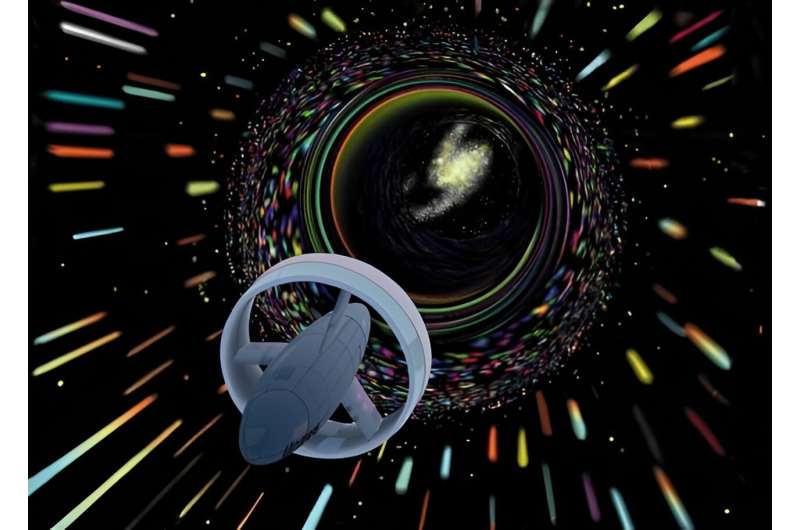Scientists have tried to answer the question of what would happen if a spacecraft with a so-called warp drive flew into a black hole. This theoretical mode of travel has the potential to move objects at speeds greater than light speed. Physicists accepted that under certain conditions the spacecraft could survive such an encounter.

Warp drive
Black holes are regions of space with such strong gravity that nothing, including light, can escape from them. In recent years, scientists have learned a lot about them. But it is still believed that if something crosses the Schwarzschild black hole, there is no turning back. However, a recently published study suggests that such an object may still exist.
It’s about the so-called warp drive. As we know, nothing in the Universe can move faster than light. Therefore, any journey between the stars must take years or decades. However, there is a theoretical way around this limitation. It is enough to place a spacecraft in a kind of “bubble” of curved space.
In that case, it can move faster than light without formally exceeding this constant. Although warp drive is mostly associated with science fiction, back in 1994, physicist Miguel Alcubierre proved that it was quite possible.
However, it requires a whole sea of energy and fulfillment of several very exotic conditions to create it, but the very possibility of bypassing in this way the restriction of the theory of relativity doesn’t cancel it. Now scientists are interested in what happens to such a spacecraft after it meets a black hole.
What the research showed
The general answer received by the scientists is “yes, a spacecraft with warp drive can survive an encounter with a black hole and even afterward be outside of it, but certain conditions must be met for that to happen.”
The first of them is the black hole itself, which should be a classical Schwarzschild black hole. That is, it should not rotate and have an electric charge. This is a kind of idealized model, but scientists are sure that many real objects can correspond to it. Although a number of others definitely don’t.
The second condition is that the spacecraft itself, although it must be inside an active warp bubble, must move at a speed less than light speed. In such a case, the warp field can “merge with the Schwarzschild sphere” in a certain way without consequences for the object inside. On the contrary, the “negative matter” spending of the feeding bubble is greatly reduced.
Since a black hole and a warp drive bubble appeared to be very similar in their properties, scientists hypothesized that research in this area could lead to the formation of black holes in a laboratory setting.
However, the results of the mathematical calculations leave more questions than they provide answers. For example, they suggest that the “warp field” can “erase” the event horizon, and we can thus transmit information from inside black holes. And this is somewhat inconsistent with some of the perceptions of them. Therefore, if warp drives are possible, we have no idea yet how they should act from a thermodynamic point of view.
According to phys.org


